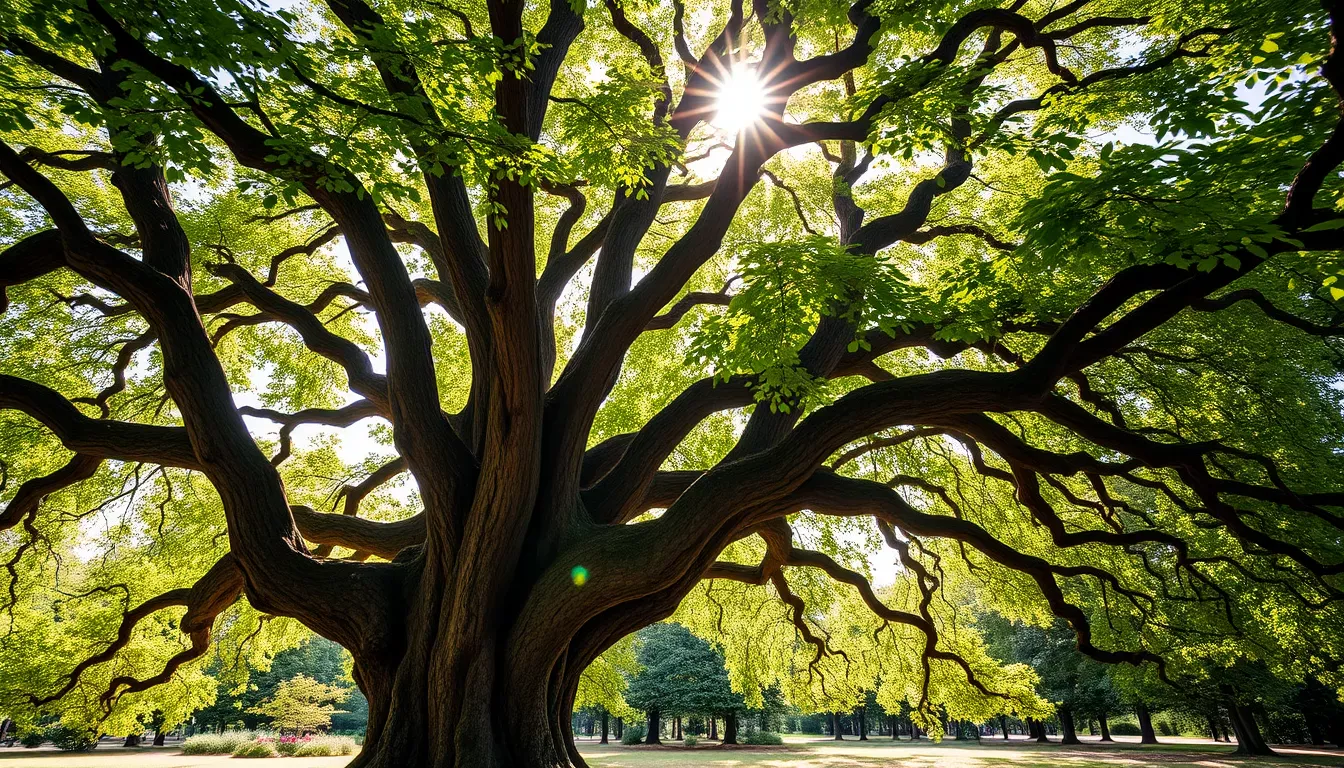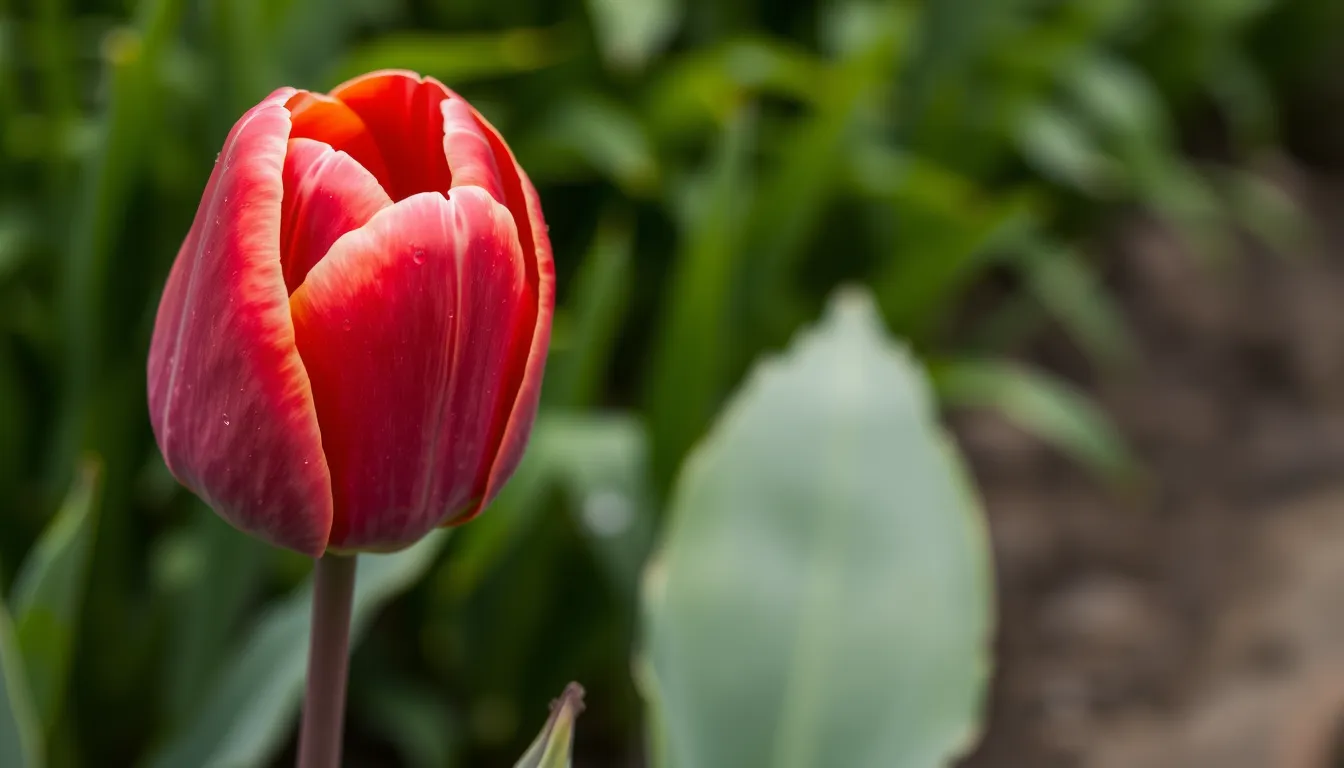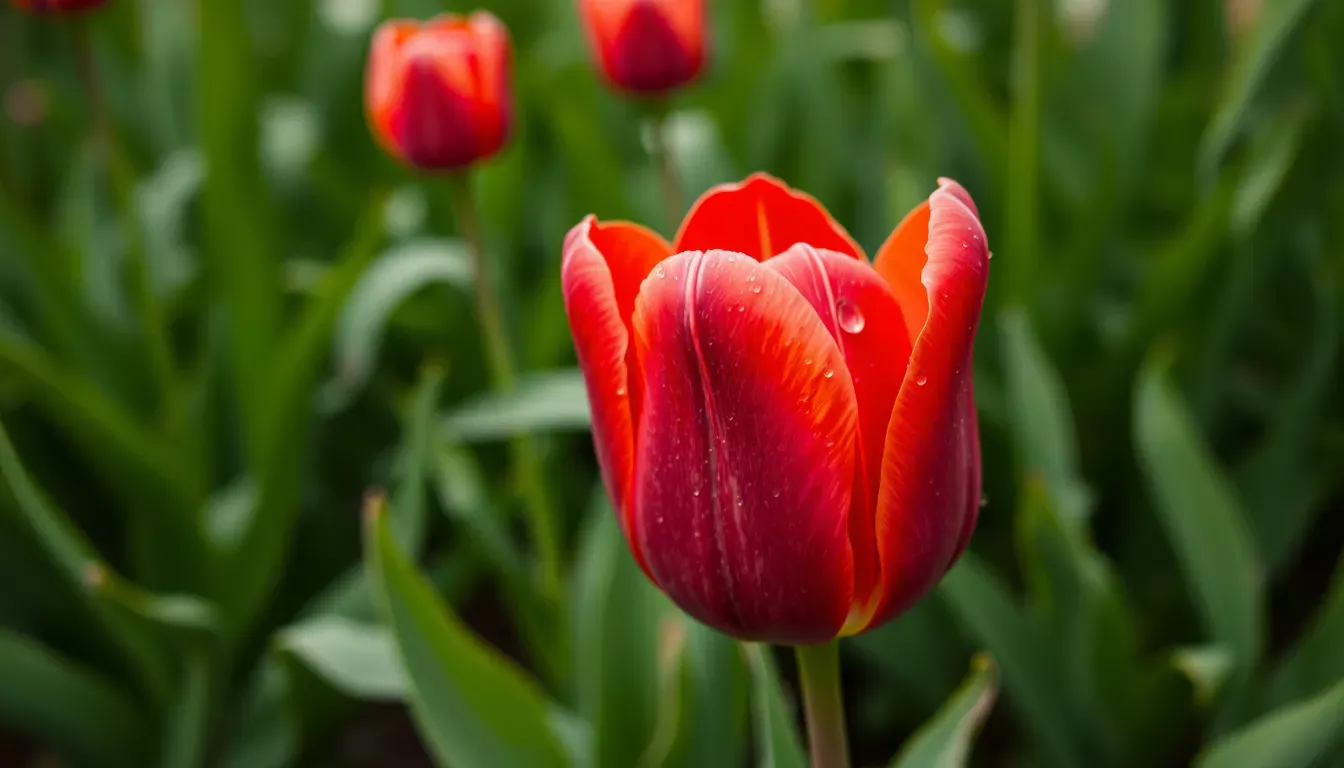Lviv’s botanical gardens serve as a magnificent oasis of plant diversity, attracting both locals and tourists with their vibrant array of flora. Spanning approximately 120 acres, these gardens are not merely a collection of plants; they are a meticulously curated environment showcasing over 10,000 species of plants from around the globe. Visitors can wander through different thematic sections, each representing unique ecosystems and plant communities.
The botanical gardens are particularly known for their extensive collection of rare and endangered plants. One can find exotic species such as the Ginkgo biloba, a living fossil that dates back millions of years, alongside more familiar species that thrive in the temperate climate of Ukraine.
In addition to showcasing a rich collection of trees, shrubs, and flowers, the gardens also emphasize conservation and education. Throughout the year, they host workshops and guided tours aimed at raising awareness about the importance of biodiversity and environmental protection.
The paths winding through the botanical gardens are lined with seasonal blooms, creating a picturesque setting that changes with each season. Spring brings a stunning display of tulips and magnolias, while early summer features the lush greenery of ferns and vibrant peonies. In autumn, the gardens transform into a canvas of fiery reds and golds, as the leaves change, offering a breathtaking contrast to the evergreens that dot the landscape.
Moreover, the gardens provide a peaceful escape from the bustle of city life, with quiet nooks and benches where visitors can relax and soak in the surroundings. The sound of rustling leaves and chirping birds adds to the tranquil atmosphere, making it an ideal spot for nature lovers and families alike.
For those intrigued by the intricate world of plants, the botanical gardens of Lviv offer a captivating experience that deepens the appreciation for nature’s diversity. Whether you’re a novice gardener, a seasoned botanist, or simply someone looking to enjoy a day outdoors, these gardens promise a memorable encounter with the natural beauty unique to the region.
Natural beauty: Landscapes and parks around Lviv
Just beyond the vibrant life found within the botanical gardens, Lviv is surrounded by an array of stunning landscapes and parks that beckon nature enthusiasts and casual visitors alike. The charm of Lviv’s natural beauty lies not only in its manicured gardens but also in the breathtaking vistas offered by various parks and natural reserves scattered throughout the region.
One of the most notable parks in Lviv is the renowned Stryiskyi Park, a sprawling area where visitors can lose themselves in the gentle embrace of nature. Spanning over 70 hectares, this park is adorned with lush greenery, winding paths, and picturesque ponds. Established in the 19th century, it features a mix of English and French landscaping styles, providing both classical elegance and naturalistic beauty. The park is particularly popular during the warmer months, when visitors can enjoy picnics on the grassy knolls, stroll among the vibrant seasonal flowers, or even rent a pedal boat to glide across the tranquil waters.
Another gem in Lviv’s crown of natural beauty is Ivan Franko Park, located next to the National Academic Ukrainian Drama Theater. This well-kept park is a favorite among both locals and tourists, offering a peaceful retreat in the heart of the city. Here, the historic chestnut trees and manicured flower beds create a serene environment ideal for leisurely walks or simply unwinding with a good book. The park is not just a green space; it is a living gallery filled with art installations and monuments, adding culture to its biological diversity.
For a wilder natural experience, the Pidgirtsi Forest located on the outskirts of Lviv offers visitors a chance to encounter the region’s natural ecosystems. With sprawling trees and an abundance of wildlife, this forest is an excellent destination for hiking, birdwatching, and even mushroom picking during the right seasons. It presents an authentic taste of Ukrainian countryside, showcasing the importance of preserving local flora and fauna.
Additionally, the Semigorye Nature Reserve, situated near Lviv, provides a unique opportunity to explore diverse habitats, from wetlands to ancient forests. This protected area is home to various species, including some that are endemic to the region, making it a critical site for ecological study and conservation efforts. Guided tours are often available, providing education about the delicate balance of these ecosystems and the significance of preserving them for future generations.
Each of these landscapes and parks, from the tranquil Stryiskyi to the vibrant Ivan Franko Park, tells its own story while contributing to Lviv’s reputation as a green haven. They reinforce the tranquil beauty of the city, allowing visitors to immerse themselves in the soothing rhythm of nature, providing perfect settings for reflection, recreation, and relaxation amid the stunning backdrop of the city’s historic architecture.
The seamless integration of nature into Lviv’s urban fabric invites exploration, making it essential for visitors to venture beyond the beautiful botanical gardens and discover the natural wonders that lie just a short walk or drive away. Whether a leisurely afternoon spent in a park or a brisk hike in a nearby forest, Lviv’s natural beauty offers a refreshing complement to the rich cultural offerings of the city.
Flora and fauna: Unique species found in the region
The Lviv region is home to an impressive array of unique species of flora and fauna, reflecting the diverse ecosystems that thrive in this part of Ukraine. Within the confines of the botanical gardens and the surrounding landscapes, visitors can encounter a fascinating variety of plants and animals that contribute to the area’s natural heritage.
One of the standout features of the botanical gardens is its collection of indigenous species that are not only visually striking but also play a critical role in local ecology. Among them is the Ukrainian lilac (Syringa vulgaris), which boasts vibrant purple and white flowers and holds cultural significance within the region. The lilac’s presence in the gardens offers a delightful fragrance in spring, drawing in various pollinators, such as bees and butterflies, that are essential for plant reproduction.
In addition to the lilac, visitors may also observe the elegant white willow (Salix alba), known for its long, sweeping branches and preference for wet soil. This tree not only enhances the beauty of the gardens but also provides crucial habitats for numerous bird species, making it a center of activity for avian watchers. Species like the great tit (Parus major) and eurasian wren (Troglodytes troglodytes) can often be spotted among the foliage, especially during spring and summer when they are in full song.
Beyond the gardens, the diverse natural environments surrounding Lviv support a wealth of animal life. Those hiking in the Pidgirtsi Forest may be fortunate enough to spot animals such as the European red deer (Cervus elaphus) and the elusive badger (Meles meles), both of which thrive in the area’s woodlands. Birdwatching here can also be rewarding, as the forest is home to species like the black woodpecker (Dryocopus martius) and the nuthatch (Sitta europaea), known for their distinctive calls and energetic behavior.
The region’s wetlands, such as the Semigorye Nature Reserve, are vital for maintaining biodiversity, featuring a rich variety of plants like cattails and water lilies. These plants not only stabilize the shores but also provide food and shelter for aquatic wildlife. The wetlands serve as critical breeding grounds for amphibians and support a myriad of insects, which in turn attract larger predators like frogs, herons, and migratory birds.
The unique plant and animal species found in Lviv’s botanical gardens and natural surroundings reveal the intricate interconnectedness of life in this lush region. They highlight the importance of conservation efforts in preserving the biodiversity that makes Lviv a true natural gem.
Lviv’s environment serves as a reminder of the delicate balance that exists within ecosystems. By observing these unique species and their habitats, visitors can gain a deeper understanding of the natural world and the significance of protecting it. With each step taken, whether through the botanical gardens or the nearby parks and forests, one can appreciate the richness of life that flourishes in this stunning region of Ukraine.
Historical significance of the gardens

The historical significance of Lviv’s botanical gardens extends far beyond their stunning beauty. Founded in the late 18th century, the gardens were established during a period of enlightenment when botanical exploration gained prominence across Europe. They serve as a testament to Lviv’s commitment to education, science, and the appreciation of natural history, embodying the cultural and academic aspirations of their time.
Originally created as a private estate for aristocratic families, the gardens were transformed into a public institution, reflecting a shift towards accessibility and education for the general populace. This change mirrored broader societal developments in Europe, where botanical gardens became centers for the study of plant sciences, promoting research and the understanding of plant diversity. Lviv’s botanical gardens play a crucial role in this narrative, being one of the earliest examples in Ukraine dedicated to the cultivation and study of exotic plants.
Over the years, the gardens have adapted to the evolving scientific landscape, marking significant milestones in botany and horticulture. They contributed to early botanical research in the region, hosting renowned botanists who conducted extensive studies on local flora and the introduction of new species. Their records and collections provided invaluable data that enhanced local and global understanding of plant species, contributing to Lviv’s reputation as a hub of academic pursuit in botany.
During the 20th century, the gardens underwent several transformations, particularly during various historical upheavals in Ukraine. Amidst political and social changes, they remained a sanctuary for botanical research and education, continuously adapting to preserve their legacy. The gardens also played an educational role by providing training and resources for aspiring botanists and horticulturists, thus fostering a new generation of plant scientists dedicated to the conservation of biodiversity.
Today, these gardens not only serve as a repository of plant species but also host numerous events and workshops aimed at promoting ecological awareness and conservation efforts. They provide a critical platform for researchers and conservationists to engage with the community, enhancing public understanding of environmental stewardship. Furthermore, they collaborate with universities and research institutions, enabling ongoing research projects that explore various aspects of botany and ecology.
A significant aspect of the botanical gardens’ historical importance is their role as a cultural landmark. Lviv, known for its rich history and architectural beauty, has seen the gardens become an integral part of its cultural identity. They are a favored destination for artists, poets, and musicians who find inspiration within their tranquil confines. Numerous cultural events, from open-air concerts to art exhibitions, take place here, showcasing the interplay of nature and creativity that characterizes the spirit of Lviv.
The legacy of Lviv’s botanical gardens is a remarkable narrative of transformation, resilience, and connection to nature. They hold a mirror to the city’s cultural evolution, attracting visitors not only for their botanical richness but as a living testament to Lviv’s enduring link to nature and its role in the scientific exploration of the natural world. The gardens continue to educate and inspire all who venture within their lush paths, standing as a proud symbol of the cultural and historical significance of Lviv.
Visiting the botanical gardens: Tips and recommendations
For an enriching experience at Lviv’s botanical gardens, visitors are encouraged to plan their visit to make the most out of what this beautiful sanctuary has to offer. The gardens are open all year round, with each season presenting a unique display of nature’s splendor. However, the best time to visit is during spring and summer when the floral displays are in full bloom, and the gardens are alive with color and fragrance.
To enhance your visit, consider joining one of the guided tours offered by the gardens. These tours provide insightful commentary from knowledgeable staff who can share intriguing details about various plant species, their origins, and their ecological importance. These tours often cater to all levels of interest, from casual visitors to botany enthusiasts eager to learn more. Check the gardens’ official website or inquire at the entrance for the schedule and availability of these educational experiences.
It’s also a good idea to wear comfortable shoes, as exploring the extensive paths can take several hours. The layout of the gardens encourages leisurely strolls through different themed areas, such as the tropical greenhouse, where visitors can marvel at exotic plants, or the rock garden, featuring alpine flora. Bring a water bottle to stay hydrated, especially in warmer months, and don’t forget your camera to capture the stunning landscapes that can be found around every corner.
For families visiting the gardens, there are often special programs and activities for children. Engaging the young ones in nature can foster their curiosity and respect for the environment. Keep an eye out for interactive displays or workshops targeted at younger audiences. Pack a picnic to enjoy in one of the serene spots; however, be sure to respect the gardens by disposing of waste properly to preserve their natural beauty.
Accessibility is also a consideration for many visitors. The botanical gardens have made efforts to ensure that pathways are well-maintained and navigable for those with mobility challenges. If you have any specific needs, contacting the gardens in advance can help facilitate a more enjoyable visit.
Additionally, make a point to explore not only the botanical gardens but also the natural landscapes surrounding Lviv. The parks and forests adjacent to the gardens offer an opportunity to deepen your connection with Lviv’s nature. Consider visiting Stryiskyi Park or Ivan Franko Park, where you can extend your experience by enjoying leisurely walks, picnics, or even just finding a quiet spot to read a book or reflect amidst the greenery.
To conclude your visit, a stop at the gift shop is recommended, where you can find unique souvenirs such as seeds of locally grown plants, gardening tools, and educational materials that deepen your understanding of the local flora. Not only will these items serve as wonderful mementos of your experience, but they also support the gardens’ ongoing conservation efforts.
Conclusion: Preserving Lviv’s natural heritage
The preservation of Lviv’s natural heritage is a crucial endeavor that contributes not only to the ecological balance but also to cultural and educational outreach within the community. The botanical gardens stand at the forefront of this effort, fostering a deep appreciation for biodiversity while ensuring that future generations are able to experience the beauty and significance of the region’s flora.
In recent years, the botanical gardens have implemented several conservation initiatives aimed at protecting endangered plant species and restoring native habitats. Through seed banks and propagation programs, they work tirelessly to safeguard rare varieties that represent Ukraine’s natural diversity. These efforts are complemented by collaborations with local universities and environmental organizations, creating a network of support for ongoing conservation research and educational programs. Such partnerships enhance the scientific understanding of plant species, their conservation needs, and vital ecological roles.
Furthermore, the gardens serve as a living laboratory where visitors of all ages can learn about the importance of conservation. Educational programs designed for school groups emphasize hands-on learning, allowing children to engage with nature directly and develop a sense of responsibility toward the environment. Workshops on sustainable gardening practices and the benefits of native plants are also offered, empowering individuals to make informed choices that help protect ecosystems beyond the gardens’ borders.
Public awareness campaigns play a vital role in promoting community involvement in conservation efforts. Events such as “Biodiversity Days” and “Earth Day Celebrations” invite residents and tourists to learn more about local flora and fauna, while encouraging participation in restoration activities. These events foster a sense of community, as volunteers come together to plant trees, clean up local parks, and engage in citizen science projects that monitor wildlife and plant health.
The positioning of the botanical gardens within the broader context of Lviv’s historic landscape also adds to their significance. As a place where people can connect with nature amidst the city’s architectural richness, they become a vital part of Lviv’s identity. The gardens embody the city’s commitment to environmental sustainability and serve as a reminder of the importance of preserving both natural and cultural heritage.
In essence, preserving Lviv’s natural heritage requires ongoing dedication from both individuals and institutions. The botanical gardens exemplify the intersection of education, research, and community engagement, demonstrating that caring for the environment is not solely the responsibility of experts but a collective effort that unites everyone. By appreciating the natural beauty that surrounds us, and recognizing the role we each play in its preservation, we can ensure that Lviv remains a green haven for generations to come.


